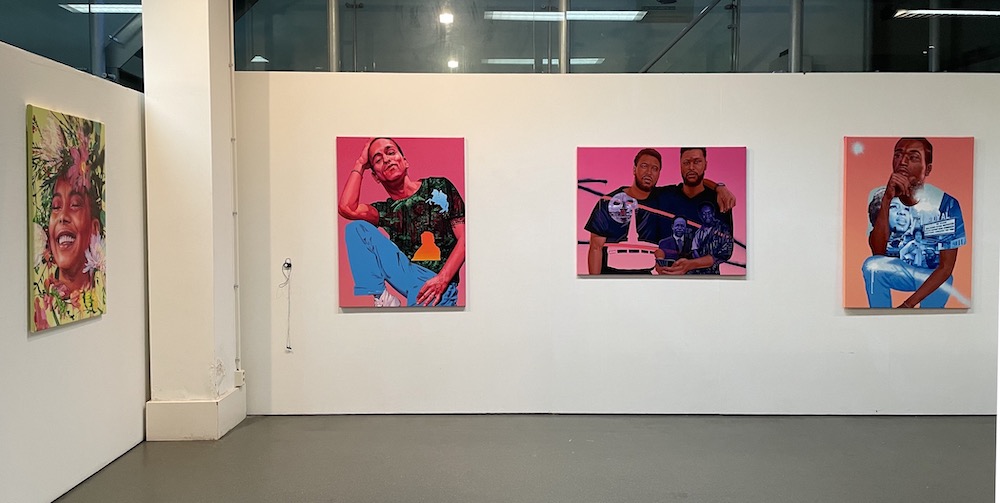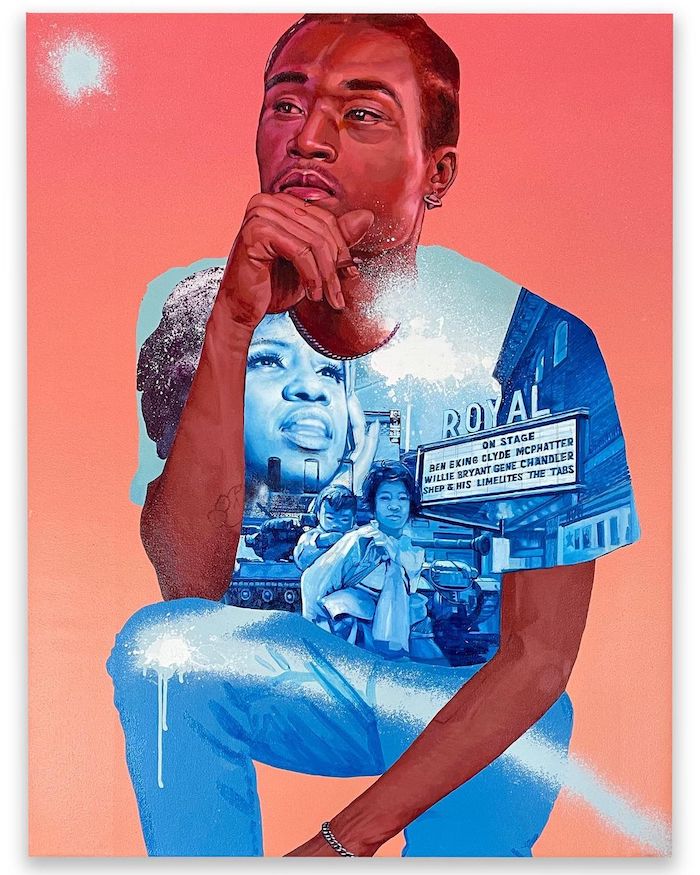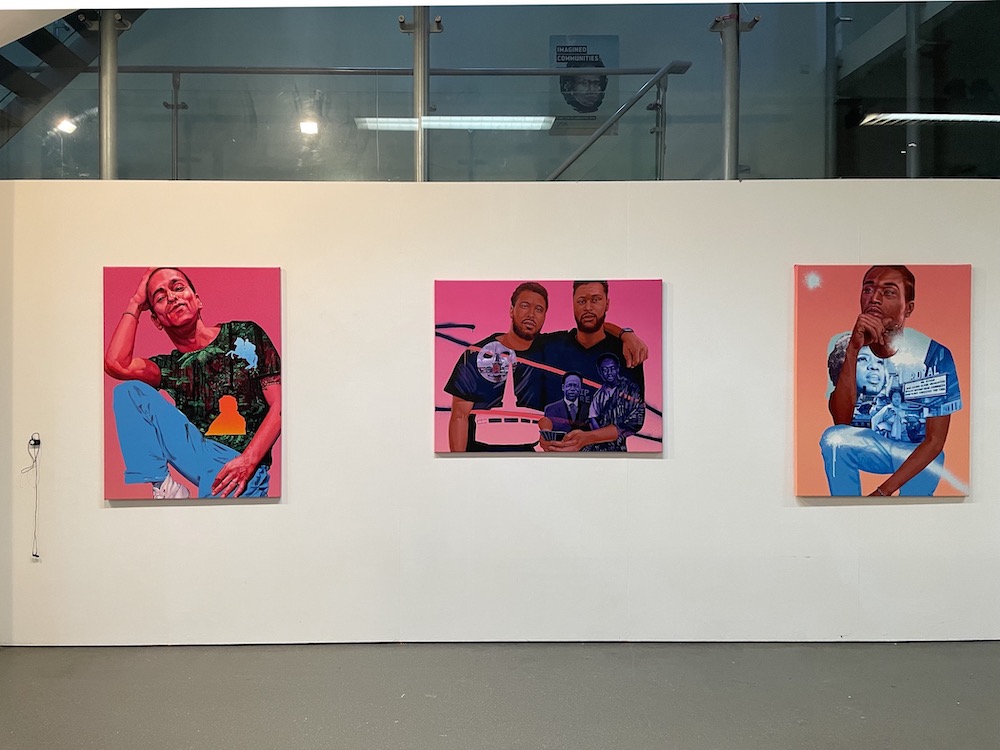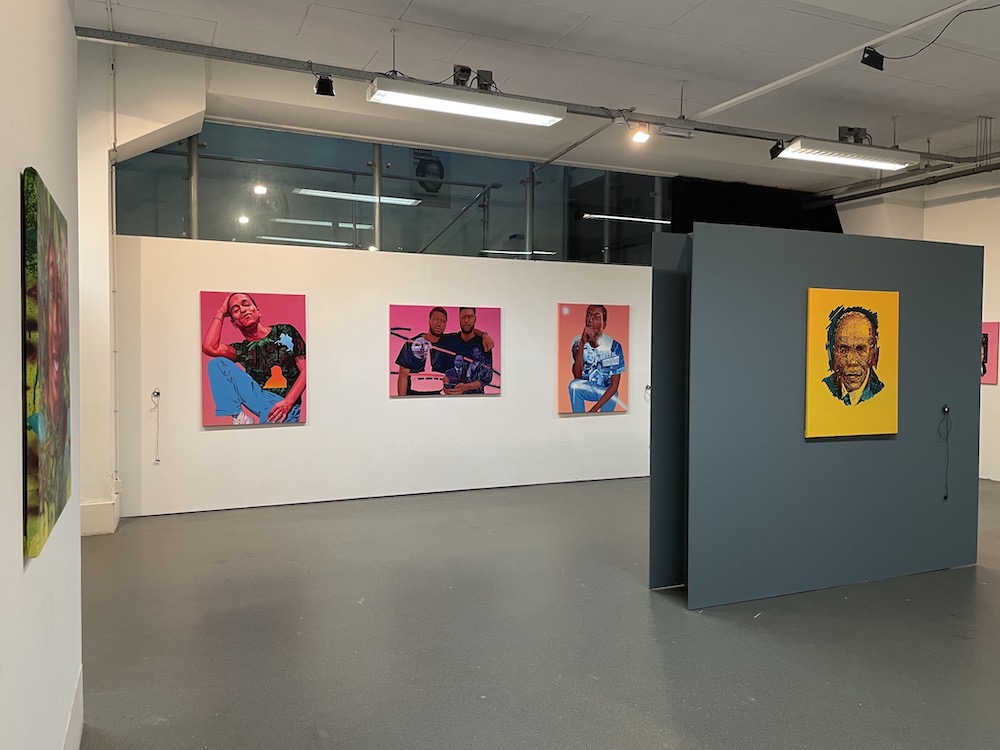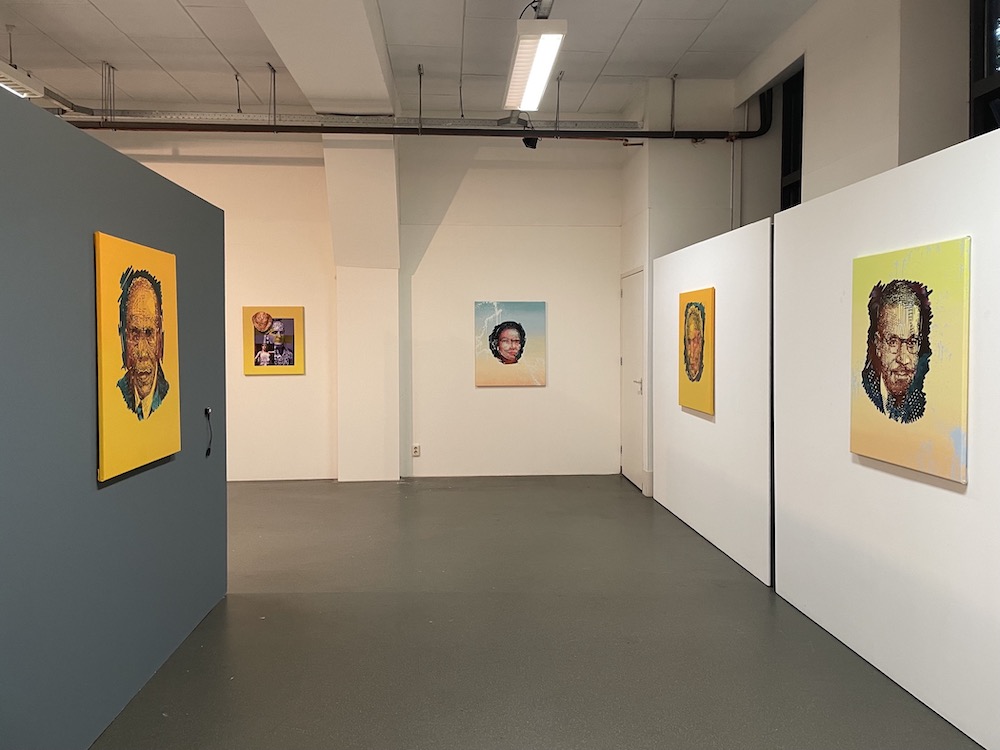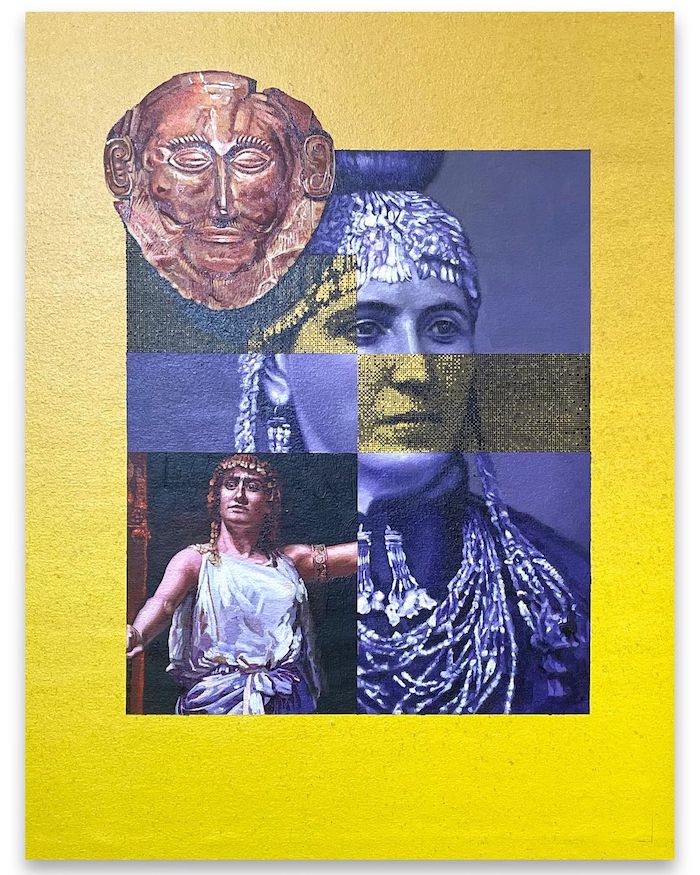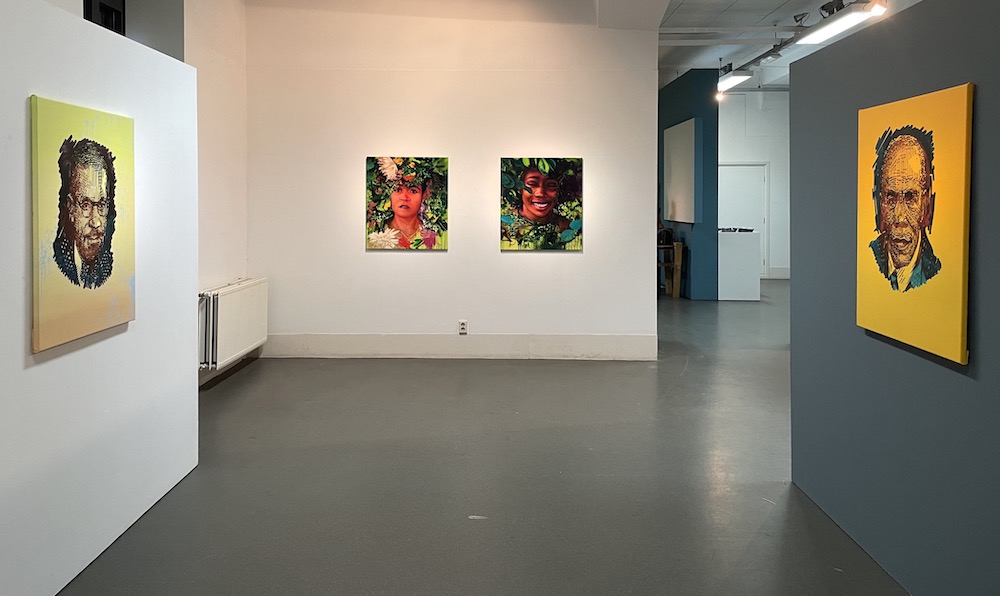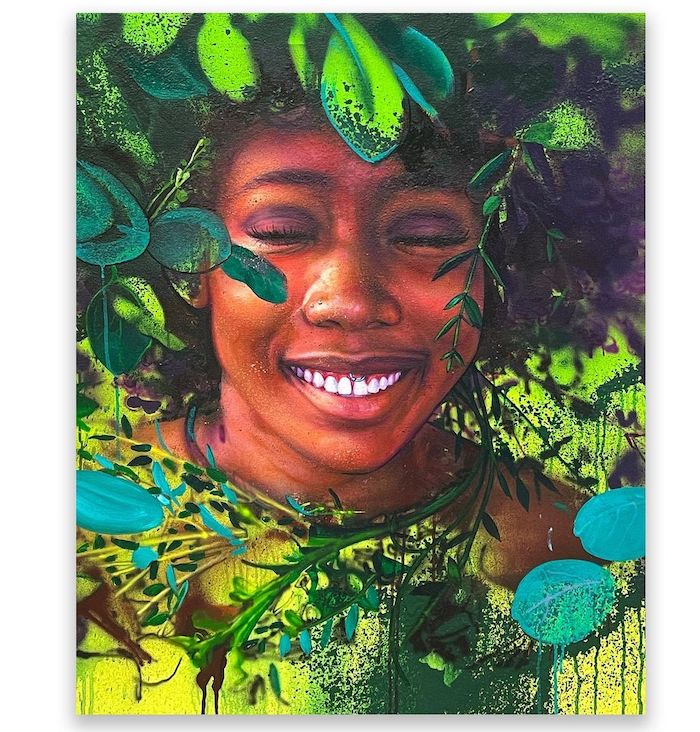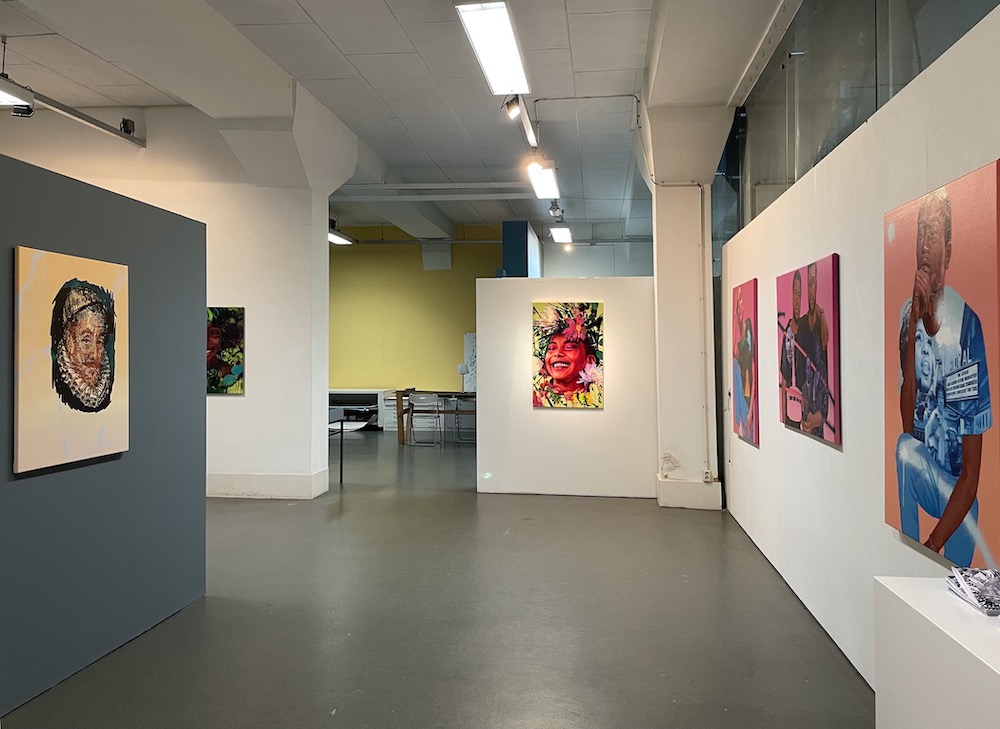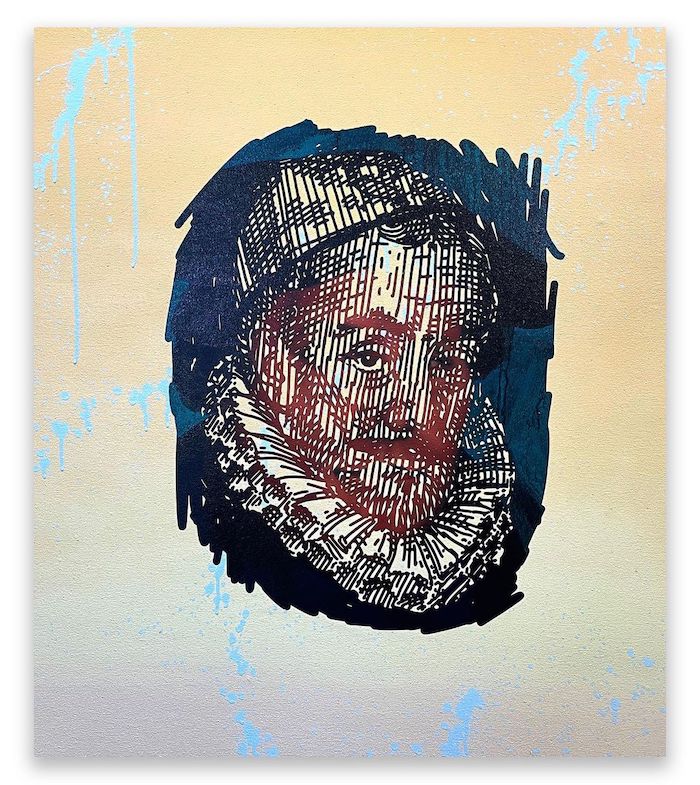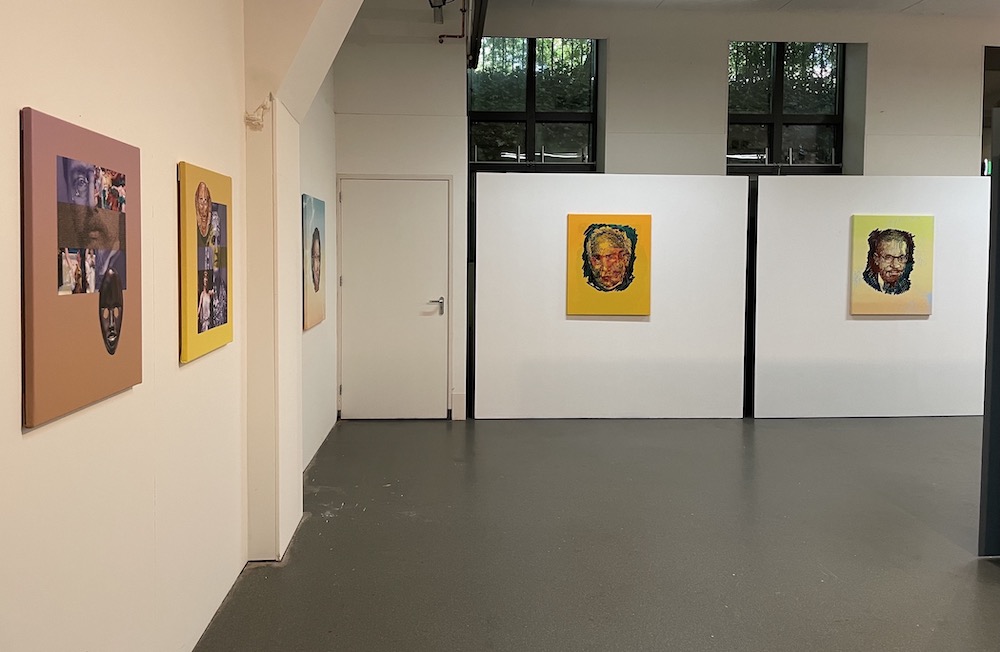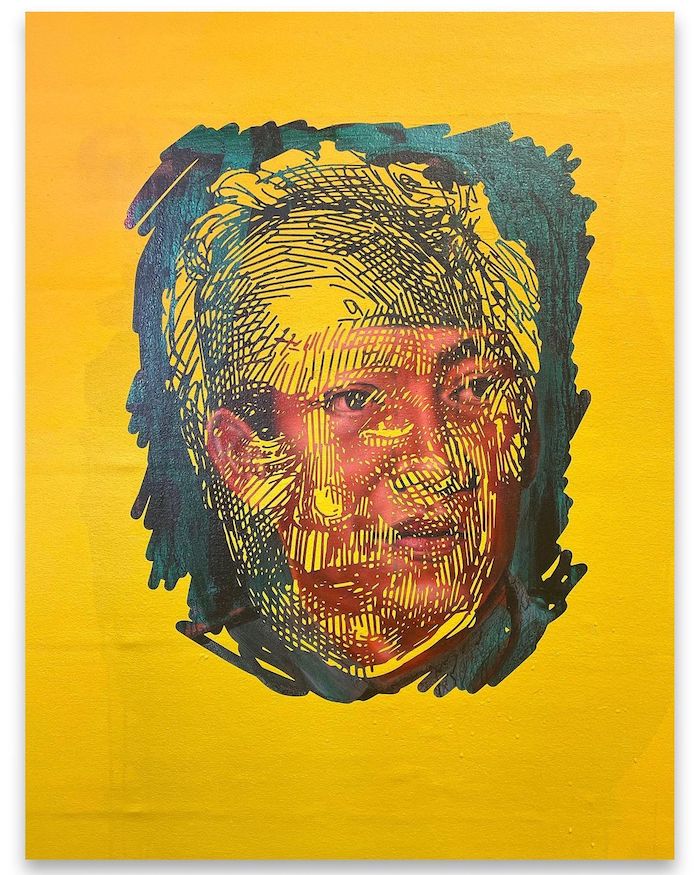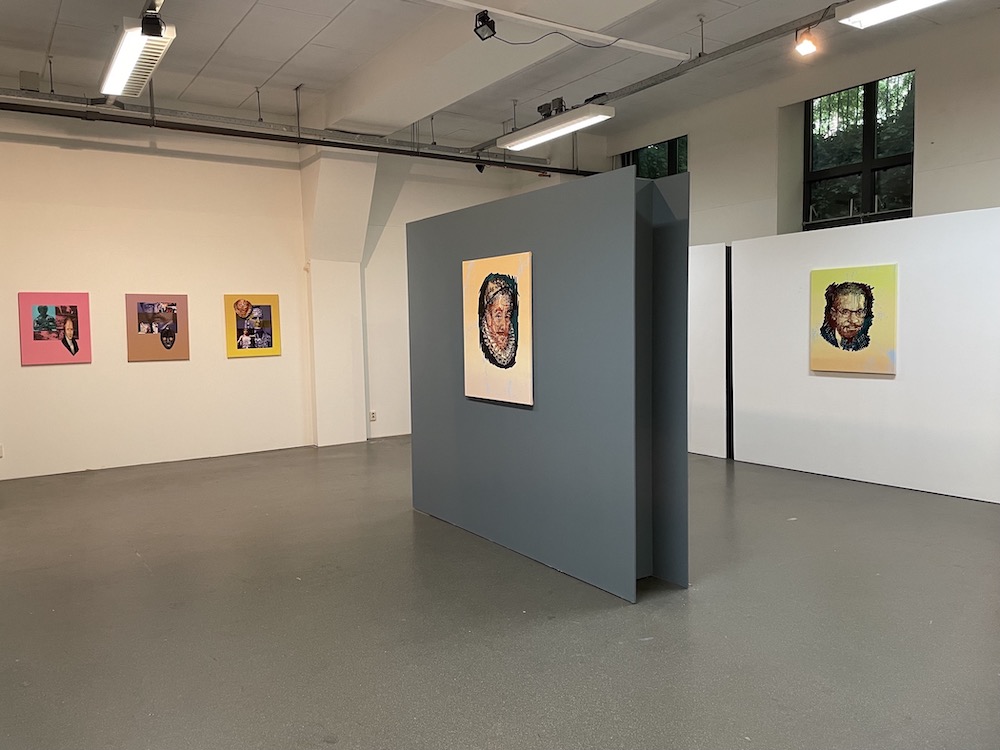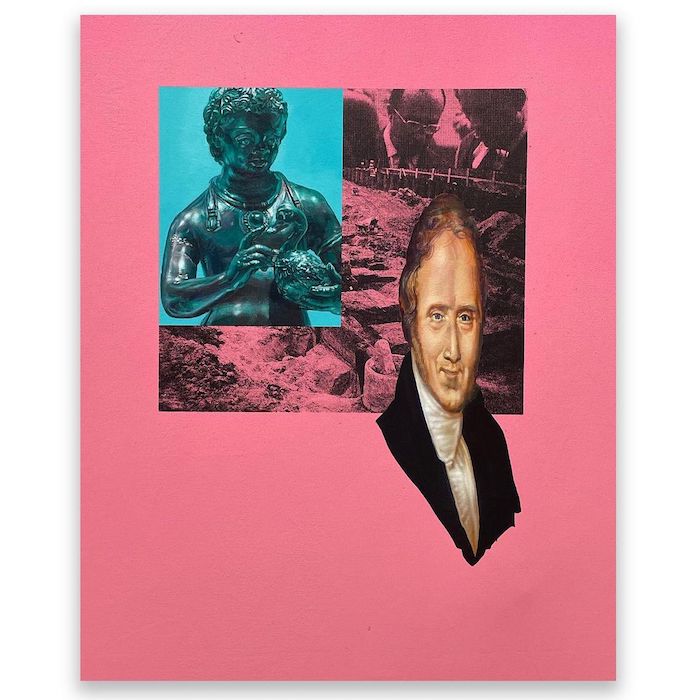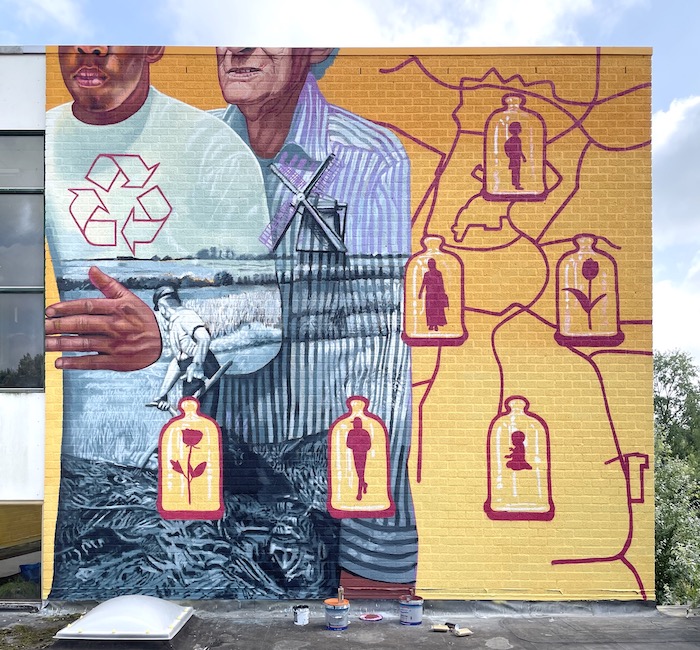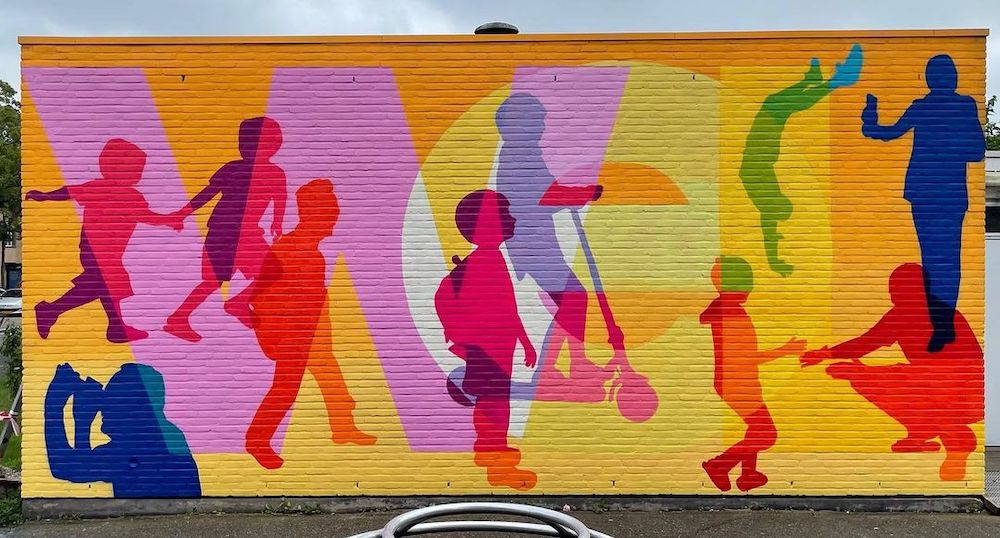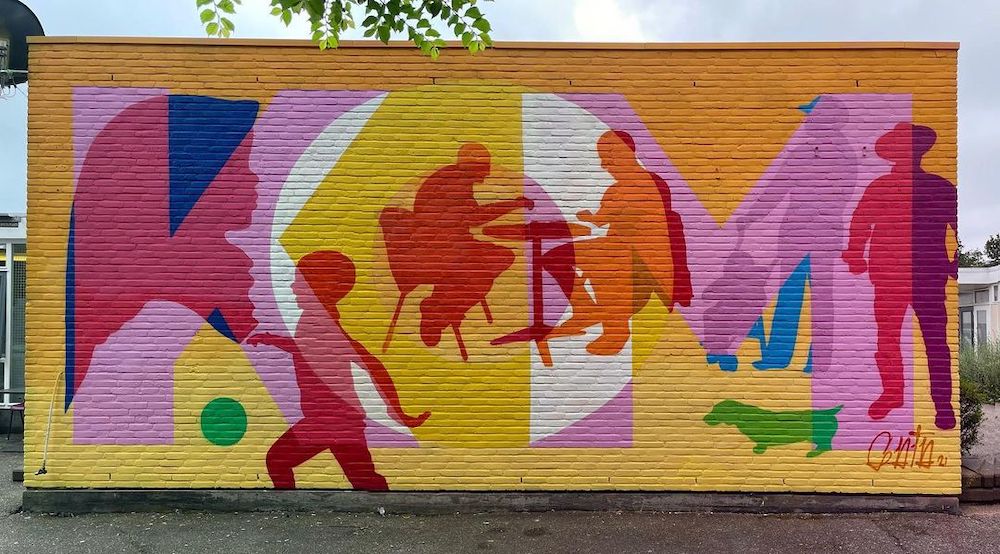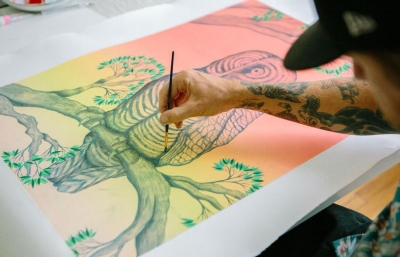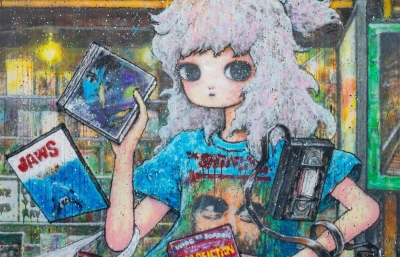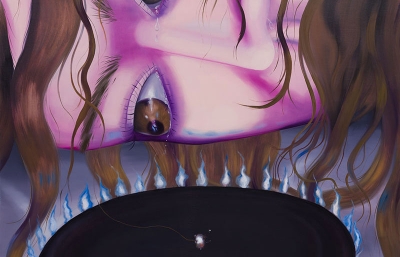Andrew Pisacane aka Gaia spent a few weeks in July over in Haarlem, The Netherlands, working on a couple of public murals and a solo exhibition that is currently on view at the 37PK space in the historic city center. Imagined Communities comprises a series of new paintings which, divided into three distinctive series, create a fact-based narrative that speaks of manipulating the past and the fabrication of whiteness and nationalism. At the same time, the three murals produced during the artist's stay are also part of the HaarlemIcons initiative organized by Raenys Martis, a mastermind behind the infamous Heerlen Murals project, and are adding to the city's collection of contemporary artworks of all forms while strengthening the identity of its neighborhoods.
Arguably most striking works in the exhibition are the history paintings which are focused on different examples from the history of archeology in which the idea of white superiority was constructed by manipulating the past. By mixing silkscreening and painting, Gaia created almost tangible conflict between the factual reality and generated stories, pointing out specific people whose actions created a false image about the past with a hope to influence the future. These include the pioneer in the field of amateur archeology, Heinrich Schliemann, Dutch classical subject painter, Lawrence Alma-Tadema, or Dutch historian and archaeologist, Caspar Jacob Christiaan Reuvens.
The second series of works, "painting drawings," are done with the vinyl stencil over the painted canvas, and are most resonant with the Baltimore-based artist's style seen in his murals around the globe. In these pieces, the artist is comparing different national figures to different cultural icons of those countries, including the likes of a political scientist and historian Benedict Anderson alongside Indonesian nationalist and post-colonial era leader, Sukrano, or a Surinamese neo-romantic writer Henri Frans de Ziel alongside dictator and 2010-2020 President of Suriname, Desiré Delano "Dési" Bouterse. This series also includes portraits of people from his native Baltimore as well as Haarlem locals whose immigrant past fits the narrative of the presentation. Again, the combination of techniques, aesthetics, and ultimately images assembled together, creates an optical illusion that speaks of duality in the context of real power and "soft power". Both seen as essential ingredients to transform a community into a nation, these simple, yet intriguing visuals are offering profound layers of reading and interpreting the fragile course of history.
Finally, the "overjoyed" paintings are focusing on the ambiance of joy and happiness and serve as sort of a counterweight to the heaviness and seriousness of the other works. In an effort to celebrate life they are placed at the beginning and the end of the presentation, symbolizing the end goal of the protest with big happy smiles and uplifting floral imagery. So instead of putting an accent on the struggle or the injustice, Gaia celebrates striving, continuing, and finally being able to have a worry-free life. Further on, some of the works are accompanied by audio elements, which, added to some of the works, widens the perspective of the works and the entire concept of the exhibition.
Finally, the two murals created around the Schalkiwijk area of the city are capturing the artist's interest in real, local people who shape the real urban environments, their personal stories, as well as individual and shared experiences, all with an accent on immigration, diversity, or economic issues. By emphasizing the interconnectedness of local situations with global themes, Gaia creates visual metaphors imbued with symbols, elements of local culture, and native residents as their monumental protagonists. —Sasha Bogojev

